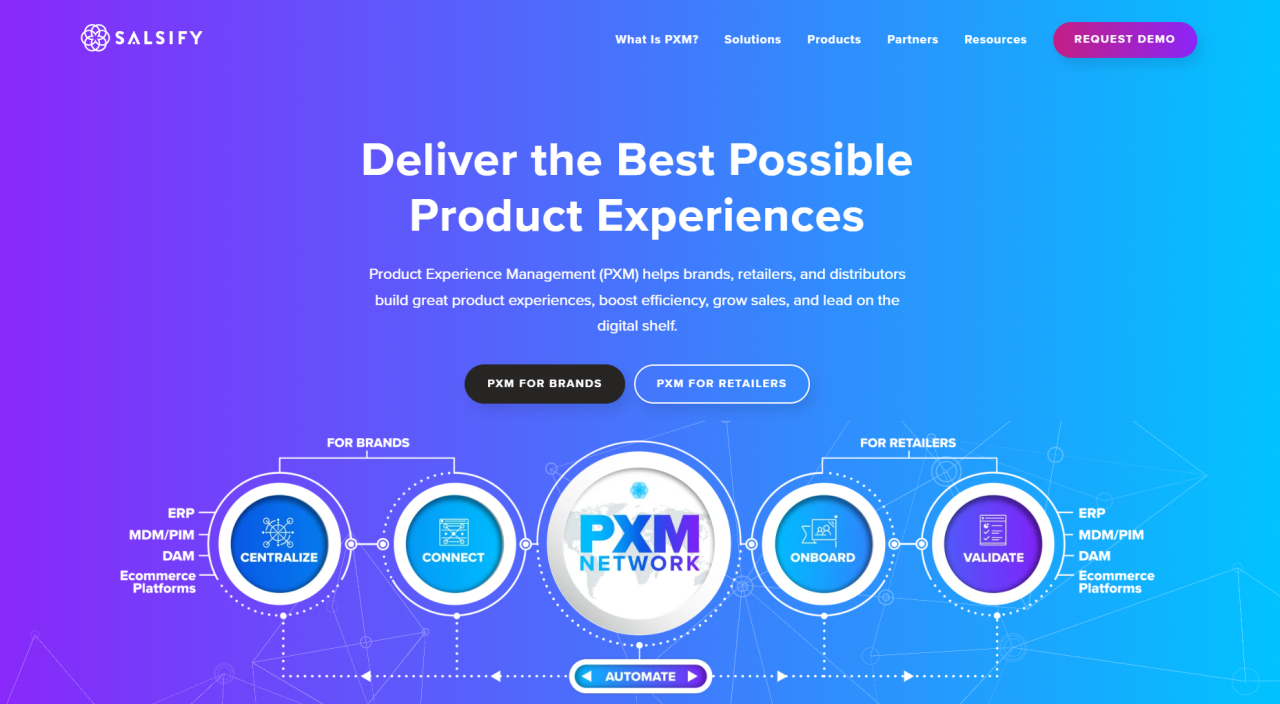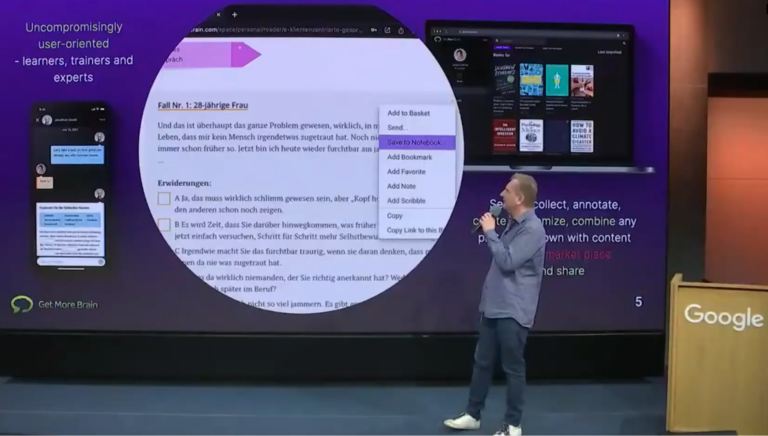Swiss-based FRENIC helps businesses go-to-market or design technology solutions that last and outperfom.
Salsify is rarely encountered in pitches in Europe, and its general reputation over here is to be anything but a “true” PIM. My own assessment of Salsify earlier this year, on behalf of a US analyst firm, reveals that Salsify has evolved from its initial focus on content syndication to become a robust PXM solution. However, it still has limitations.
Key Takeaways
- Salsify has significantly improved its data modeling capabilities, making it a viable option for businesses with complex product data requirements.
- The workflow engine is powerful and flexible, but the AI-driven automation features are somewhat lacking.
- Salsify excels in omnichannel syndication, with deep integrations into major marketplaces and support for various data exchange protocols.
- Salsify Sites provide an easy way to publish curated product sets, but they lack access control and advanced features.
- Salsify’s Automated Insights module provides valuable feedback information from online retailers, but it is only available for select retailers and comes at an additional cost.
- Salsify’s pricing is complex and can be expensive, especially for businesses with large catalogs or high syndication volumes.
Data Modeling
- Salsify now supports custom records, infinite hierarchies for products and custom records, and inheritance models.
- It also offers a variety of data types, including enhanced content, and allows for custom data type definitions.
- However, Salsify still lags behind some competitors in terms of data model sophistication, and there are sizing limitations.
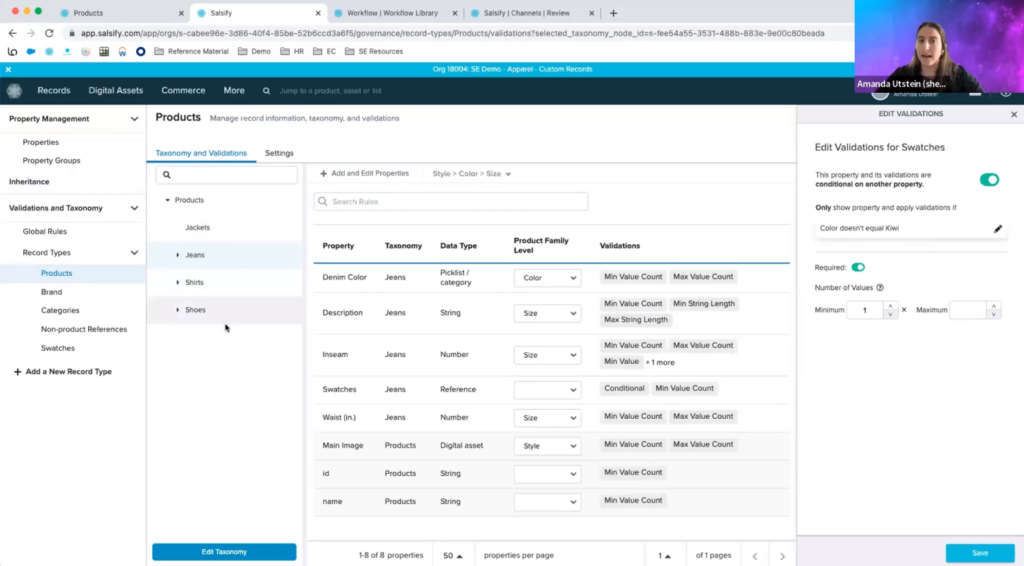
Workflows
- The Salsify workflow engine is powerful and flexible, with the ability to trigger workflows manually, via events, or via API.
- There is also an in-built library of ready-made workflow templates for basic tasks.
- However, Salsify’s AI-driven automation features are somewhat lacking, and there is no auto-classification of products or auto-mapping of product attributes.
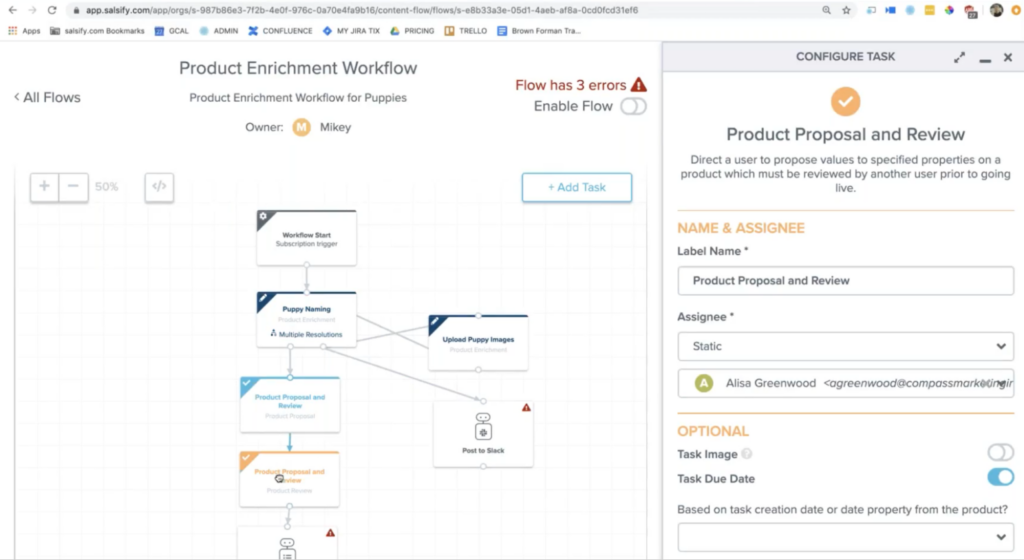
Digital Asset Management
- Salsify offers a search through digital assets but does not offer a DAM solution as often the case with competitors.
- It also partners with Cloudinary for media file conversion, optimization, and distribution, and it integrates with various best-of-breed DAM systems.
Omnichannel Syndication
- Salsify offers templated exports and direct connections to various marketplaces, including Amazon, Best Buy, Walmart, and Target.
- For many of the connected marketplaces, Salsify offers unparalleled support and extends their integrations into B2B marketplaces as well as regionally.
- It also supports syndication via GDSN and has its own proprietary data exchange platform called Open Catalog.

Microsites & Portals
- Salsify Sites provide an easy way to publish curated product sets to specific target audiences.
- However, they currently lack access control and advanced features which limits its use cases as a portal, e.g. with partners.
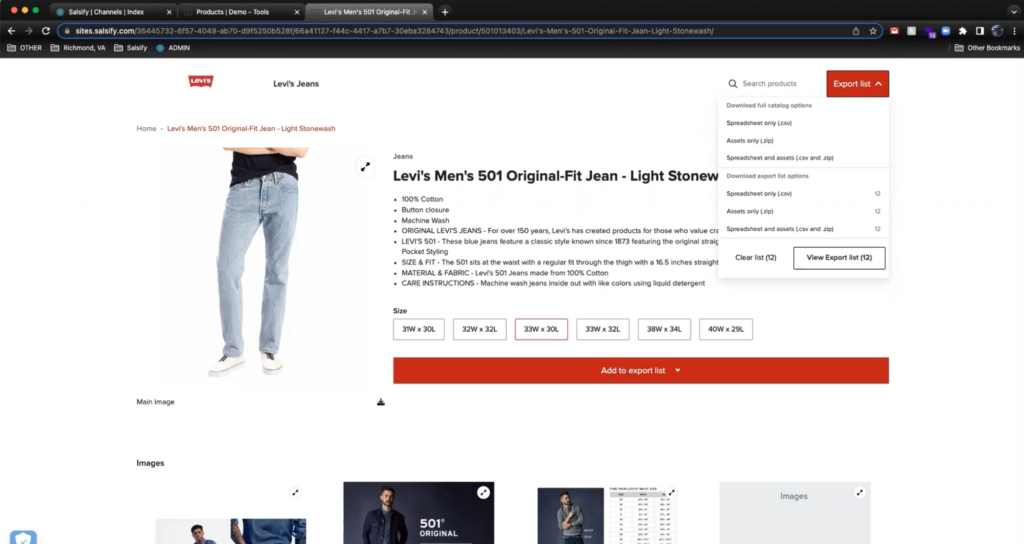
Developer Experience
- Salsify offers a REST API covering a balanced array of methods and data types that can also be accessed in a low-code IPaaS way via MuleSoft.
- There is an Enhanced Content SDK for building rich product experiences.
- However, the developer experience could be improved, there are somewhat strict API throttling limitations and we are far off a MACH approach.
Digital Shelf Analytics
- Salsify’s Automated Insights module provides feedback information from online retailers to brand manufacturers.
- It helps track retail prices, real-time inventory, product rankings, and more.
- However, Automated Insights is only available for select marketplaces and comes at an additional cost.

Pricing
- Salsify ProductXM starts at an entry level of USD 50k annually, and they are currently building a product suite (e.g. SupplierXM).
- Costs rapidly exceed USD 150k as you add more named users or markets.
- Salsify also charges for functional modules via a base fee per module, geographic region, and usage fee.
Recommendations
- Consider Salsify as a viable option for businesses with complex product data requirements and a need for strong omnichannel syndication capabilities.
- Evaluate Salsify’s AI-driven automation features and roadmap carefully to ensure they meet your future needs.
- Be prepared for a complex pricing model and potentially hidden additional costs as you grow.
- Keep in mind that Salsify is currently hosted in the US only which might be of concern for some European customers with regard to GDPR.
About Salsify
Salsify is a SaaS-based product experience management (PXM) platform headquartered in Boston with offices in Lisbon, London, Paris, and Sydney. As of summer 2023, it has a workforce of about 700 FTEs, generates approximately USD 200 million in revenue (my estimate) of which 90% in North America
Salsify serves over 1,100 customers, 60% of which are in the consumer packaged goods (CPG) industry. The company’s flagship customers include Campbell’s, Coca-Cola, Mars, Kraft-Heinz, and Petco. Its main competitors are Syndigo, inriver, and Akeneo: The Product Experience Company.
Salsify has raised USD 450 million in VC funding and acquired French SaaS vendor Alkemics in 2021.
